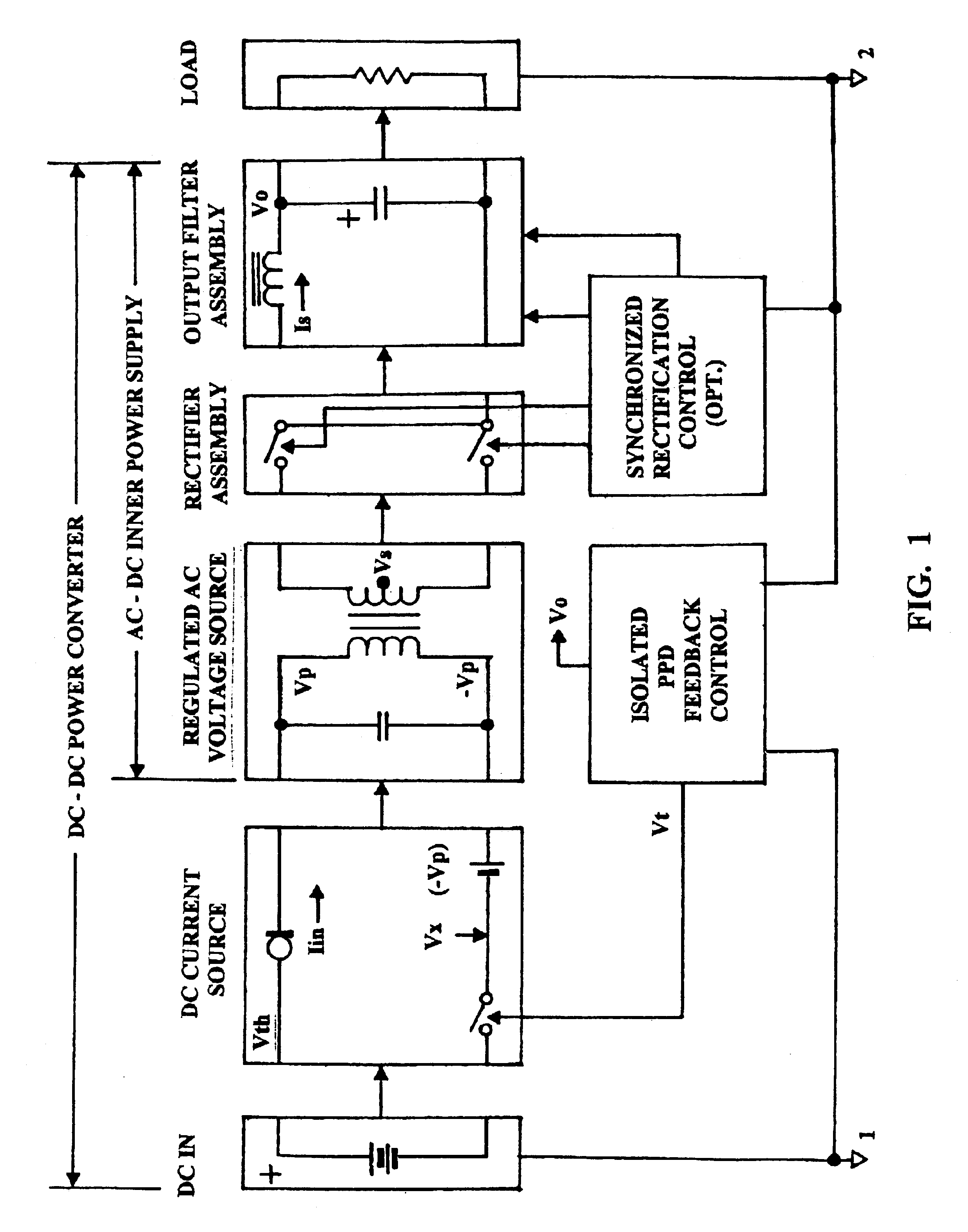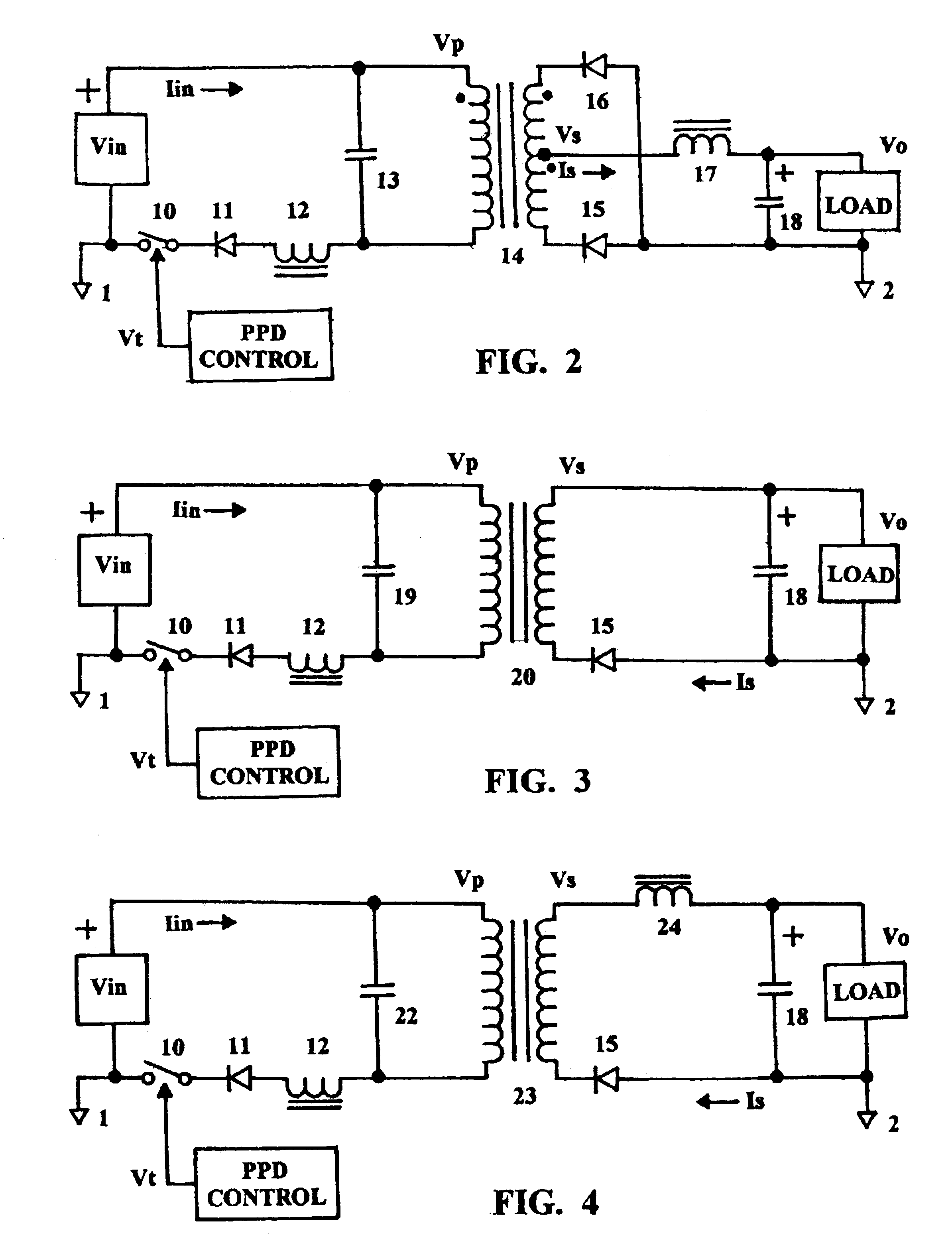Power converter with input-side resonance and pulse-position demodulation feedback control
a power converter and input-side resonance technology, applied in the direction of electric variable regulation, process and machine control, instruments, etc., can solve the problems of inability to distinguish the concept of "development from that deemed ", laborious and unproductive task of describing prior art, and the observations in this document are no longer valid
- Summary
- Abstract
- Description
- Claims
- Application Information
AI Technical Summary
Problems solved by technology
Method used
Image
Examples
Embodiment Construction
An overview of the power transfer process is provided by FIGS. 7, 7A and 7B. FIG. 7 plots the slope of Fn / Fo vs. design coefficient K. Where design coefficient K is a multiplier applied to the frequency of natural resonance, Fn, to derive an inverse function resulting in slope Fn / Fo.
FIG. 7A describes image impedance reflected from the load through a power isolation transformer to a resonant capacitor during time period of forced oscillation Fo. This impedance is defined as:
Zp=.omega.LR / (.omega..sup.2 L.sup.2 +R.sup.2).sup.1 / 2 (eq. 1)
Impedance Zp acts upon resonant capacitor Cr in a manner to create a time-constant describing the discharge rate for capacitor Cr during the time forced oscillation frequency component, Fo. Where power switch 10 has opened and transformer 14 output voltage Vs is higher than Vo by the forward voltage drop of the rectifying element(s) 15 / 16. The discharge time constant then becomes:
Td=ZpCr (eq. 2)
Component Fo encloses a non-resonant, forced oscillation, fr...
PUM
 Login to View More
Login to View More Abstract
Description
Claims
Application Information
 Login to View More
Login to View More - R&D
- Intellectual Property
- Life Sciences
- Materials
- Tech Scout
- Unparalleled Data Quality
- Higher Quality Content
- 60% Fewer Hallucinations
Browse by: Latest US Patents, China's latest patents, Technical Efficacy Thesaurus, Application Domain, Technology Topic, Popular Technical Reports.
© 2025 PatSnap. All rights reserved.Legal|Privacy policy|Modern Slavery Act Transparency Statement|Sitemap|About US| Contact US: help@patsnap.com



